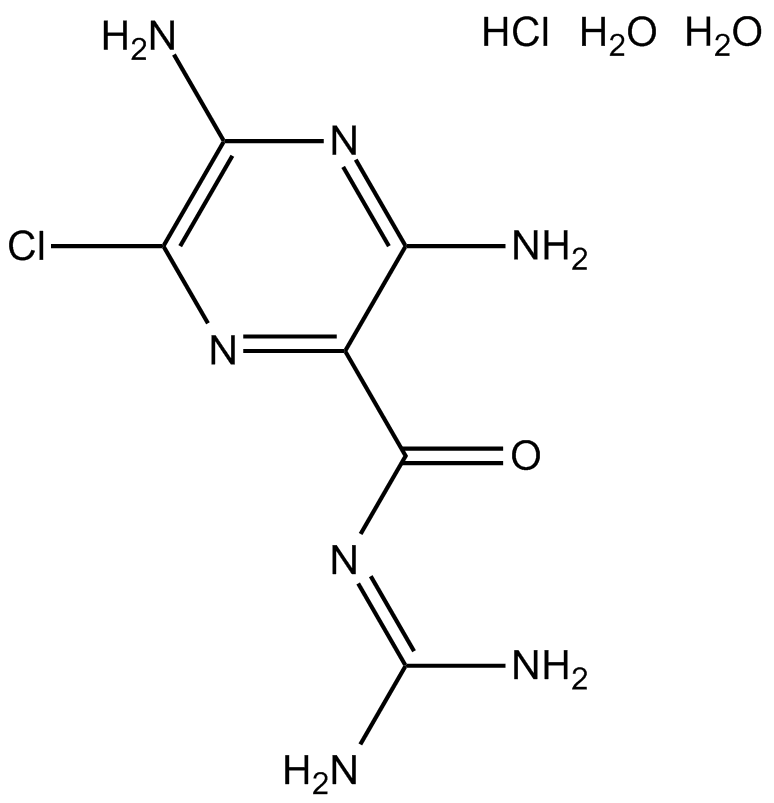Amiloride HCl dihydrate |
| Catalog No.GC12051 |
Amiloride HCl dihydrate (MK-870 hydrochloride dihydrate) is an inhibitor of both epithelial sodium channel (ENaC[1]) and urokinase-type plasminogen activator receptor (uTPA[2]).
Products are for research use only. Not for human use. We do not sell to patients.

Cas No.: 17440-83-4
Sample solution is provided at 25 µL, 10mM.
Amiloride hydrochloride dihydrate is an inhibitor of both Epithelial sodium channel (ENaC) and urokinase-type plasminogen activator receptor (uTPA).
Amiloride hydrochloride dihydrate is a potent epithelial sodium channels (ENaCs) blocker. Amiloride is highly concentrated in the plasma 15 to 30 minutes following the injections. 2 mg/kg dose of Amiloride hydrochloride dihydrate has no effect on blood pressure, heart rate, mesenteric vascular resistance, or hindquarters vascular resistance as compare to the baseline measurements (n=7). Over a 2 hour period, Amiloride hydrochloride dihydrate elicits negligible responses in arterial pressure (-1±1 mmHg) and heart rate (-10±6 bpm/min) as compare to baseline levels. Results show an Amiloride hydrochloride dihydrate dose-related response pattern for the c-Fos activation in the area postrema (AP). Even at the lowest dose of Amiloride hydrochloride dihydrate (0.1 mg/kg), the number of c-Fos labeled neurons in the AP is statistically different from the control rats at a p<0.01 level[1].
References:
[1]. Miller RL, et al. Blockade of ENaCs by amiloride induces c-Fos activation of the area postrema. Brain Res. 2015 Mar 19;1601:40-51.
[2]. Xu LB, et al. Amiloride, a urokinase-type plasminogen activator receptor (uTPA) inhibitor, reduces proteinurea in podocytes. Genet Mol Res. 2015 Aug 14;14(3):9518-29.
Average Rating: 5 (Based on Reviews and 6 reference(s) in Google Scholar.)
GLPBIO products are for RESEARCH USE ONLY. Please make sure your review or question is research based.
Required fields are marked with *




















